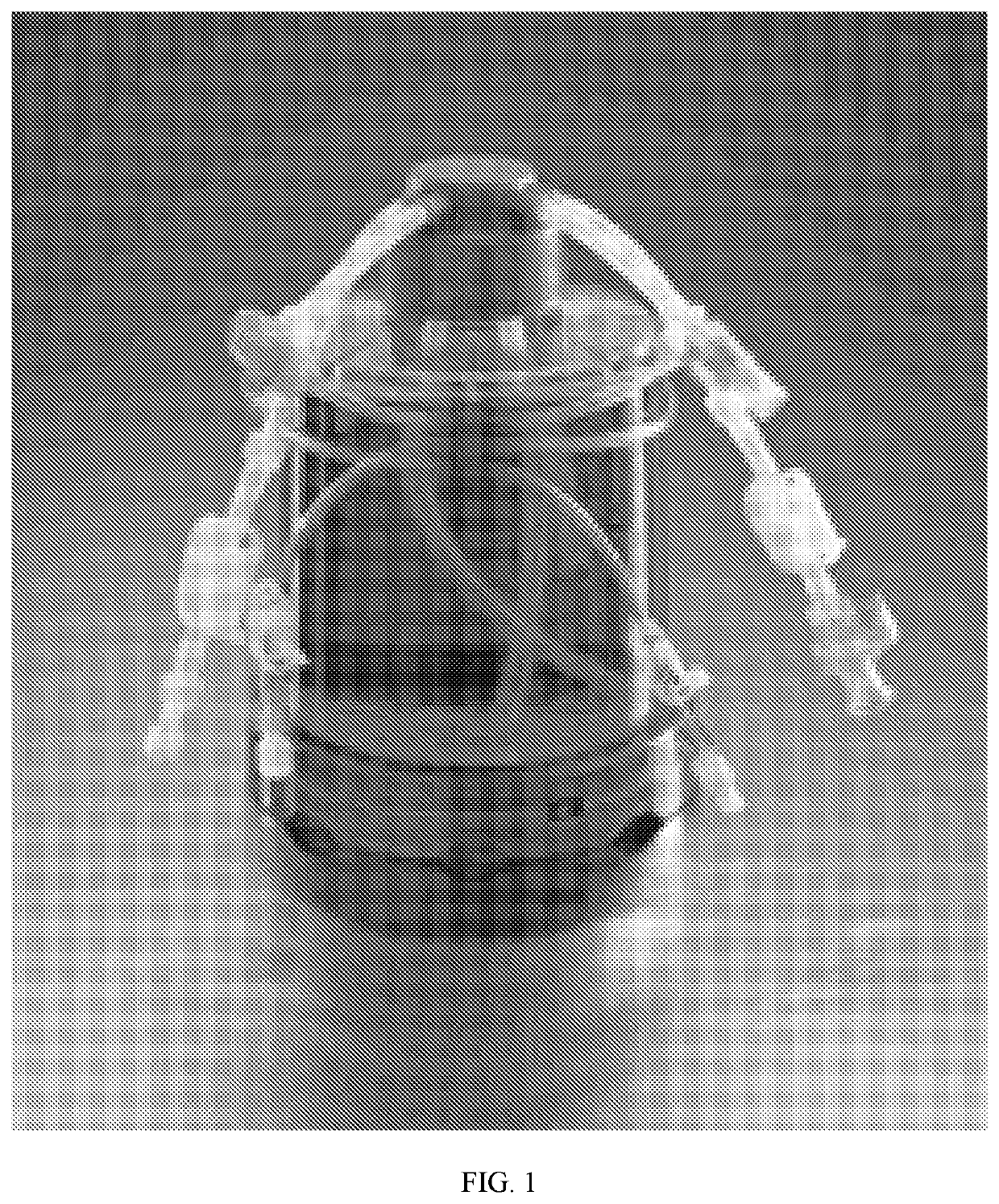Closed-system manufacturing process for car-t cells
a manufacturing process and closed-system technology, applied in the field of making genetically modified t cells, can solve the problem of not generating new viruses, and achieve the effect of shortening the time frame and minimising physical manipulation
- Summary
- Abstract
- Description
- Claims
- Application Information
AI Technical Summary
Benefits of technology
Problems solved by technology
Method used
Image
Examples
example 1
A Single-Train Process in a Single Vessel
[0040]An exemplary protocol for performing a single train process in a single vessel is provided in TABLE 1.
TABLE 1Stage (time)StepsInitiation:1.Make 1.2 L supplemented media (SM).(Day 0)a.Thaw a 25 ml aliquot of Knockout(KO) Serum Replacement media(Thermo Fisher Scientific, SanDiego CA) in a 37° C. dryheating block, inverting frequently.b.Remove 24 ml XVIVO-15 media(Lonza BioWhittaker) from a 1 Lbottle, and add 24 ml of thealiquot to the 1 L bottle ofXVIVO-15 media.c.Into a 50 ml conical tube, draw40 ml XVIVO + KO and add to it1 ml IL-21, 100 μl IL-15, and500 μl IL-7 (all 10 ng / μl stocks).2.Pipette 48 ml SM into each of two50 mL conical tubes.3.Thaw two 50e6 cell vials of bothCD8 and CD4 isolated primary T-cells,transferring the vials of cells tothe appropriately labeled 50 mLconical tubes.4.Centrifuge for 10 min at 400 g, aspiratesupernatant carefully.5.While centrifuge is running, assemblea Jensen cap (a Jensen cap allowsaccess to a vessel...
example 2
A Single-Train Process in a Single Vessel
[0041]An example protocol for performing a single train process in a single vessel is provided in TABLE 2.
TABLE 2Stage (time)StepsInitiation:1.Make 200 mL supplemented media (SM).(Day 0)a.Thaw a 5 ml aliquot of Knockoutserum replacement (KSR) mediain a 37° C. dry heating block,inverting frequently.b.To 196 mL XVIVO-15 media, add4 ml of the KSR, and 200 μLIL-21, 20 μL IL-15, and 100 μLIL-7 (all 10 ng / ul stocks).2.Pipette 48 ml SM into each of two50 mL conical tubes.3.Thaw two 50e6 cell vials of bothCD8 and CD4 isolated primaryT-cells, transferring the vials ofcells to the appropriately labeled50 mL conical tubes.4.Centrifuge for 10 min at 400 g,aspirate supernatant carefully.5.Resuspend CD4 cells in a finalvolume of 10 ml SM, and removea counting sample.6.Resuspend CD8 cells in a finalvolume of 10 ml SM, and removea counting sample.7.Determine volumes necessary for a62.5e6 of each cell type.8.When volume of cell suspension forthe G-Rex has bee...
example 3
Single Train Process in a Single Vessel Compared to Conventional Process
[0042]A single train process in a single vessel was performed in a method substantially similar to the process described in Example 1. TABLE 3 compares the single train process in a single vessel (84121) with a conventional method used in a PLAT-02 clinical trial, for preparing genetically modified T cells. In the PLAT-02 methods, cells were cultured in bags with media containing fetal bovine serum (FBS), and the CD4 and CD8 populations were cultured separately.
TABLE 3PLAT-02 method84121 method (7(conventionalday process forprotocol forproduction ofproduction ofgeneticallygeneticallyParameter:modified cells)modified cell)CD4+ / CD8+CD4 and CD8 T cellsCD4 and CD8 T cellsculture:grown together ingrown separately inG-Rex.VueLife bags.Culture time:7 days.More than 14 days.Handling time:30 hours, hands-on.About 130 hours,frequent handling.Volume adjustmentsNo counting duringAliquots taken forto culture medium:incubatio...
PUM
| Property | Measurement | Unit |
|---|---|---|
| time | aaaaa | aaaaa |
| time | aaaaa | aaaaa |
| time | aaaaa | aaaaa |
Abstract
Description
Claims
Application Information
 Login to View More
Login to View More - R&D Engineer
- R&D Manager
- IP Professional
- Industry Leading Data Capabilities
- Powerful AI technology
- Patent DNA Extraction
Browse by: Latest US Patents, China's latest patents, Technical Efficacy Thesaurus, Application Domain, Technology Topic, Popular Technical Reports.
© 2024 PatSnap. All rights reserved.Legal|Privacy policy|Modern Slavery Act Transparency Statement|Sitemap|About US| Contact US: help@patsnap.com









